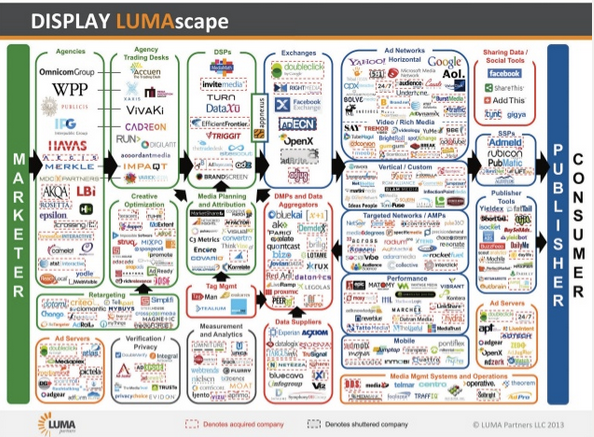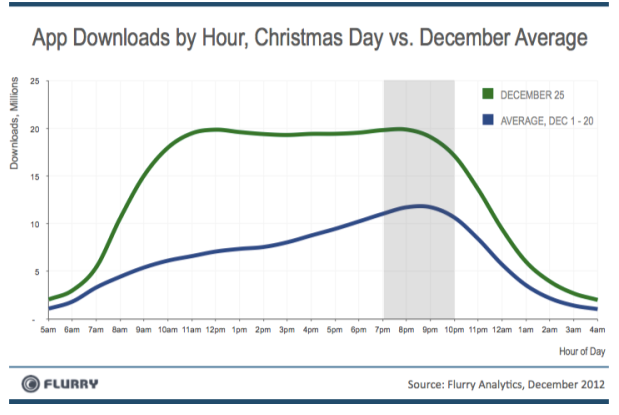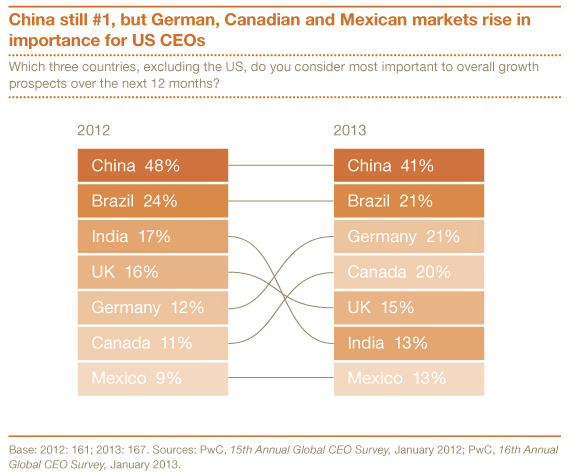Editor’s Note: This is a guest post by Mark Suster (@msuster), a 2x entrepreneur, now VC at GRP Partners. Read more about Suster at his Startup Blog, BothSidesoftheTable.
Creating awareness for your brand and products is one of the lifebloods of technology startups yet in a world where so many companies are being created it becomes difficult to rise above the noise.
 Ever notice how some companies tend to be in the press all the time and your big new product launch struggled for inches?
Ever notice how some companies tend to be in the press all the time and your big new product launch struggled for inches?
Mostly it’s because your marketing campaigns suck.
Or more directly – they are likely narcissistic resuscitations of your newest features or bragging points that nobody but your marketing team and your mom care about.
I recommend that companies move beyond narcissistic marketing to what I call “point-of-view (POV) marketing.”
Here’s what I mean …
Let’s start with what it takes for a journalist to want to write a story. Here’s what’s going through his/her head:
- Is this story “newsworthy” or am I being asked to publish a press release?
- Do I have an “angle” from which to write the story (first company to do X, company does biggest X, consumer behavior is doing X)?
- If I’m covering a company can I get evidence of what the competition is doing so the story is balanced?
- Do I have data or facts to present so the story has legs?
- Can I get sources to talk on-the-record or off-the-record to lend credibility to the topic?
- Will I have information that other journalists don’t have (otherwise known as a “scoop”)?
But mostly they’re thinking, “Will my audience even care about this topic?”
The ultimate measure of success for a journalist is viewership so if nobody cares about your shitty little company and the story you’re trying to pitch then the journalist doesn’t want to publish. And it’s their judgment that becomes the ultimate arbiter of this.
And beyond eyeballs they also care about “journalistic integrity” (aka their reputation) so they want to be sure they’re not being gamed. That’s why having long-term relationships with journalists matters and why having people close to the journalist who can vouch for you.
So how exactly do you break out then?
If you start with a POV rather than product features / functions or your own internal news story you’re already a long way down the track of answering the above questions. The idea is that you put out information with data and a point-of-view and that becomes the story rather than you.
Why would I want to have a POV rather than talking about my cool new features?
The major battle for press is a battle for “mindshare” and it’s exactly the reason I blog. I am a VC. I hand out money. How differentiated is that? But through expressing points-of-view I can raise above the consciousness of my customers (entrepreneurs and limited partners who invest in VC funds) in ways that I couldn’t without breaking through the noise of the hundreds of others of VCs who also have money.
Think about Luma Partners. They are an investment bank that targets the technology & media sectors. They basically help companies get sold and help buyers determine which companies to buy.
Their website proclaims,
“LUMA Partners is a different kind of investment bank. We provide strategic advice to digital media companies in a manner that reflects how corporate development is actually done. This more strategic approach produces better outcomes for acquirers and target companies alike.”
Can you imagine that ever getting inches in the press? Or somebody reading that and thinking “Yeah, I get it. Let me be sure to use me some Luma Partners. They’re different. More strategic. Must call. Now. Dialing.”
Of course not.
But everybody knows Luma Partners in our space. Why?
Because they produce the “LUMAscapes” which are essentially visually guides to all of the major players in a technology market. It’s brilliant.
 Every corporate buyer of technology and/or technology companies knows the LUMAscape and uses it to figure out which vendors they should consider. And thus every technology company in that space fights to be sure they’re on the LUMAscape.
Every corporate buyer of technology and/or technology companies knows the LUMAscape and uses it to figure out which vendors they should consider. And thus every technology company in that space fights to be sure they’re on the LUMAscape.
And every time a new LUMAscape is published it is newsworthy. Why?
A journalist has a visual chart they can use. That chart has information on it. Some people were added to the chart. Others were removed. There’s drama. Intrigue.
It doesn’t talk about Luma’s strategic approach. But everybody knows that Luma produced it.
Now of course there’s a lot more that goes into building a brand like the fact that the founders of Luma have long reputations in our industry and people respect them. Plus they run conferences with the top people (which is another form of POV marketing by the way).
But mostly they break through the noise of many other investment banks by having a POV.
One of the masters of this in the startup technology world is Flurry. Consider this blog post titled, “Christmas 2012 Shatters More Smart Device and App Download Records.” In the post they list four charts with data showing how Christmas day is a huge driver of downloads for mobile applications (obviously because many people get new smartphones for the first time). It’s why every major mobile app developer gears up for the holiday season by trying to be as high as possible on the charts because when the newbies come searching for popular apps in the app stores you get a huge additional bump if you’re already high in the charts.
 Flurry doesn’t talk about all of their analytics features and functions. They offer a point-of-view about their market. And they back it up with data. And journalists eat that shit up because it has all that they’re looking for: facts, charts, an angle, news, something that their readers care about, etc.
Flurry doesn’t talk about all of their analytics features and functions. They offer a point-of-view about their market. And they back it up with data. And journalists eat that shit up because it has all that they’re looking for: facts, charts, an angle, news, something that their readers care about, etc.
And Flurry always gets mentioned. So when somebody is going to the purchase aisle and thinking about buying a mobile analytics platform they have the brand recognition that matters.
Final example. PwC. They sell accounting services. You can imagine the press release, “New innovative model allows us to do audits differently than the competition!” Or I guess that was the slogan for Arthur Andersen. Ouch. Kidding!
But look at what PwC actually does in this report, “CEO Surveys for Business Growth” which has a POV, two charts and a video to watch. They have configured the charts to be easily downloadable and sharable directly from the page and the video to be embeddable. Their marketing team ought to gets some pats on the back. Making it extra easy to copy charts / data just increases the lift the story gets.
 By publishing your data on a blog (as in the case of Flurry and PwC) you get the added benefit of driving traffic back to your website as the journalists often link to the “full report” and thus you get all of the SEO juice to drive future search traffic also.
By publishing your data on a blog (as in the case of Flurry and PwC) you get the added benefit of driving traffic back to your website as the journalists often link to the “full report” and thus you get all of the SEO juice to drive future search traffic also.
So next time you’re thinking about how to get coverage for your new downloadable widget that third-party vendors can install and instantly get optimized gobblygook for some feature they didn’t know they needed and want a journalist who doesn’t give a fork about optimized gobblygooks and frankly doesn’t even understand what that is … think about leading with POV marketing instead.
When you get your potential customer talking about your brand, linking back to your website to learn more and show curiosity that’s when you want to hit them with, “have you ever thought about …?” But by then that person is a qualified lead that has shown enough interest in your website to pay you a visit.
If you want more marketing & PR tips I summarized a few of them over here on my blog, BothSidesofTheTable and I’ll add to the mix over time.
And I’m sure it’s not lost on you that my tips and my blogging are, in fact, POV marketing. After all, my money has the same president on it as everybody else’s in the US.